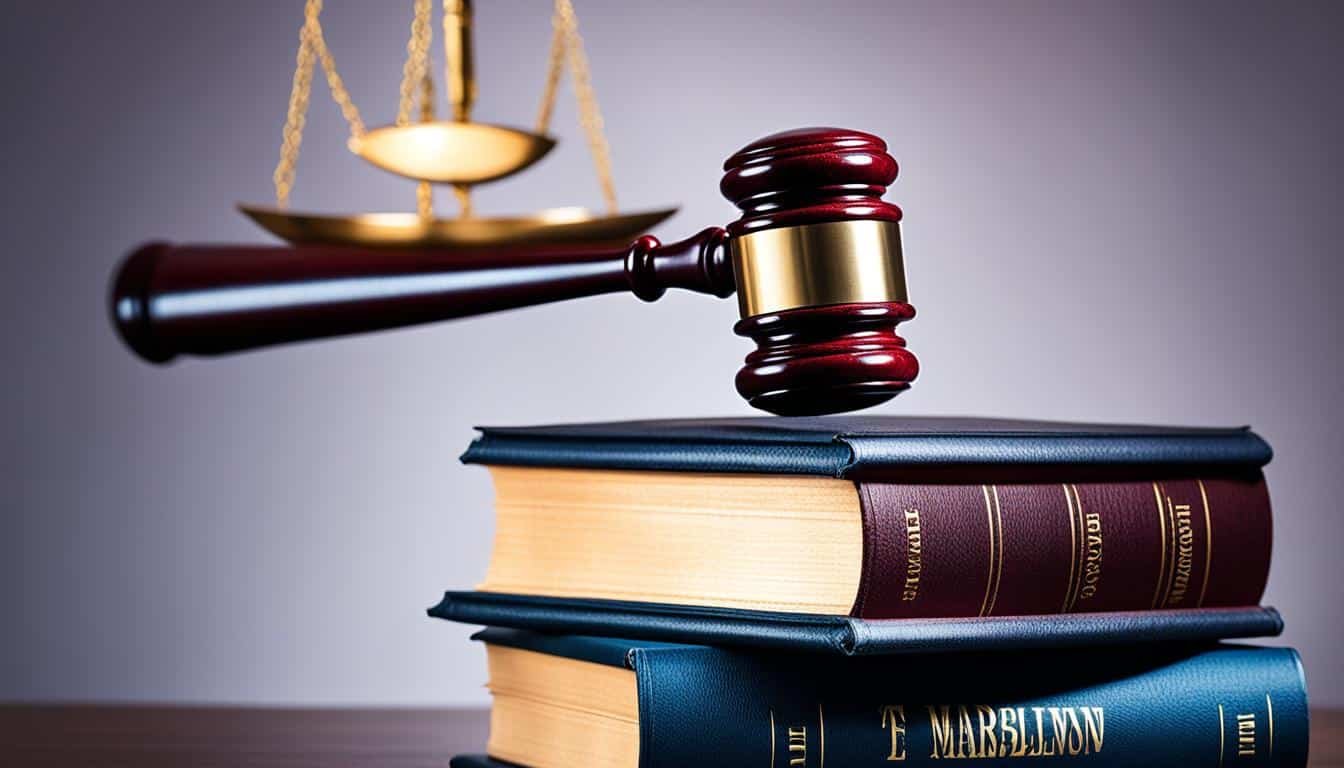Legal Practice The principle of precedent, also known as stare decisis, is essential in modern law. It ensures a steady and predictable application of laws. Precedent means that courts usually follow previous decisions when new cases are similar. This piece looks at precedent, how it has evolved, and why it matters in common and civil law.
Also Read: What Career Opportunities Are Available With A Masters In Special Education?
The declaratory theory states that judges don’t create law; they find and share it. While some disagree with this theory, we explore why precedent matters. It helps with legal stability, meets people’s expectations, and aims for equal justice. We also talk about different types of precedents and how they affect the law.
Key Takeaways
- Precedent, or stare decisis, is the legal principle that courts should generally follow prior judicial decisions when ruling on similar cases.
- The declaratory theory of precedent holds that judges do not make law, but rather declare and publish it, but this theory has faced criticism.
- Reasons for following precedent include maintaining legal stability, allowing reasonable expectations, and ensuring equality in judicial application.
- The distinction between authoritative and persuasive precedents is important in both common law and civil law systems.
- Balancing precedent and justice is a key challenge, as courts may need to depart from precedent in certain circumstances to ensure fair outcomes.
The Concept of Stare Decisis
The legal principle of stare decisis means “to stand by decisions.” It is a key part of modern law. This idea started in English law and says courts should usually follow past decisions on similar cases.
Also Read: What Are The Different Levels Of Nursing Education And Their Respective Roles?
Definition and Origin
An English jurist named Croke first talked about stare decisis. He said that things ruled many times should remain settled. These ideas were supported by William Blackstone. He believed in following old rules, unless they are “flatly absurd or unjust.”
Historical Evolution
The concept of stare decisis grew through debates. Some thought judges only state the law. Others saw how judges shape the law by their decisions. This conflict is key to how stare decisis evolved over the years.
“Those things which have been so often adjudged ought to rest in peace.” – Croke
TThe idea of stare decisis is now crucial for the law. It helps keep the legal system stable and predictable. Though the legal world changes, the meaning and use of stare decisis are still widely discussed among experts.
Precedent as a Source of Law
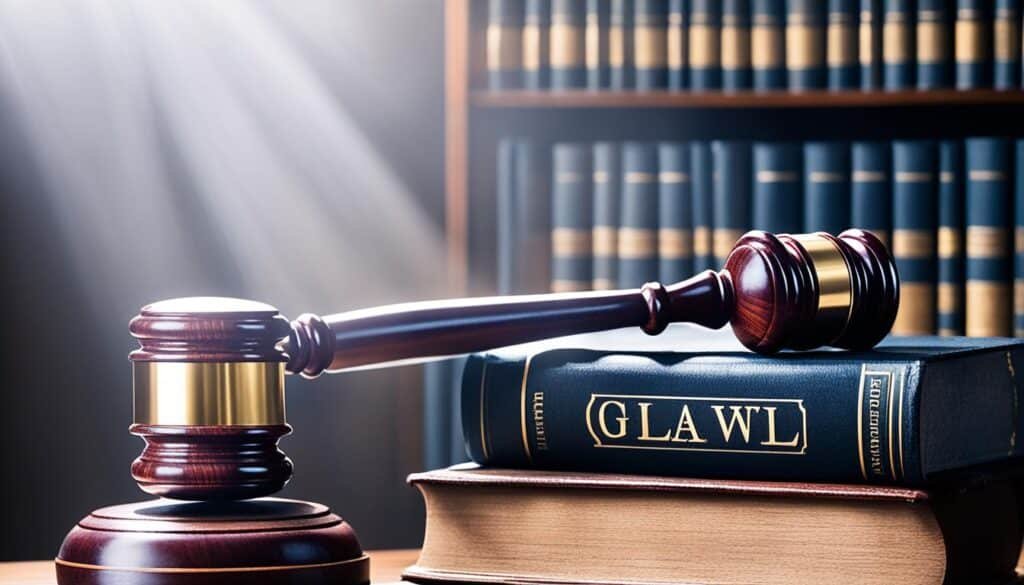
In the legal realm, precedent influences courts in different ways based on the legal system in place. In common law areas, like the United States and the United Kingdom, judicial decisions hold a key position. Courts make rulings according to prior cases, ensuring legal correctness.
Also Read: What Career Pathways Are Available Through Career And Technical Education?
Yet, in civil law regions – found in continental Europe and beyond – things differ. Here, laws come mainly from written codes, the constitution, and international treaties, not precedent. Judicial decisions are secondary to these primary laws.
The reason for these variations lies in the traditions of common law and civil law. Common law prizes prior decisions highly due to stare decisis, requiring respect for earlier rulings. This makes past court decisions crucial for present rulings.
In contrast, civil law considers precedent with less weight, as new interpretations can happen. This gives flexibility in applying the law. As time passes, legal systems sometimes blend aspects of each other. For example, civil law may start to value judicial decisions more, mimicking certain traits of common law.
The relationship between precedent and other legal sources is intricate. It affects how legal systems worldwide work. Thus, understanding precedent is crucial for making laws just and fair for everyone.
Legal Practice and the Declaratory Theory

The declaratory theory of precedent says judges don’t make law. They just announce what the law already is. According to this view, law is like a silent force that judges uncover with their decisions. But, some important legal minds, like John Austin and John Chipman Gray, don’t agree.
Also Read: LEED Exam Accreditation: Career Benefits And Opportunities
Criticisms of the Declaratory Theory
Austin and Gray think judges are very much involved in making law. They say judges shape the law through their decisions, especially in new or unclear situations. They call the declaratory theory a “childish fiction” that doesn’t fit the real process of law development.
Critics of the declaratory theory argue that judges must make law at times. They shape and refine legal principles by interpreting the law. This is most obvious when the law is not clear, or new situations test its limits. In such cases, courts have to adjust and grow the law.
“The declaratory theory has been seen as a ‘childish fiction’ that fails to account for the reality of how precedents shape the evolution of the law.”
In civil law systems, the view is different. Here, judges follow strict laws and rules. They have less freedom to create law through their decisions. This approach is in contrast with the spread of the declaratory theory.
The debate between the declaratory theory and the idea of judicial lawmaking shows the significant role of past decisions in the present legal system. It touches not just common law but also civil law practices. This argument reveals the challenge in understanding the role of precedents today.
Also Read: CBEST Exam Registration: A Step By Step Guide
Reasons for Following Precedent
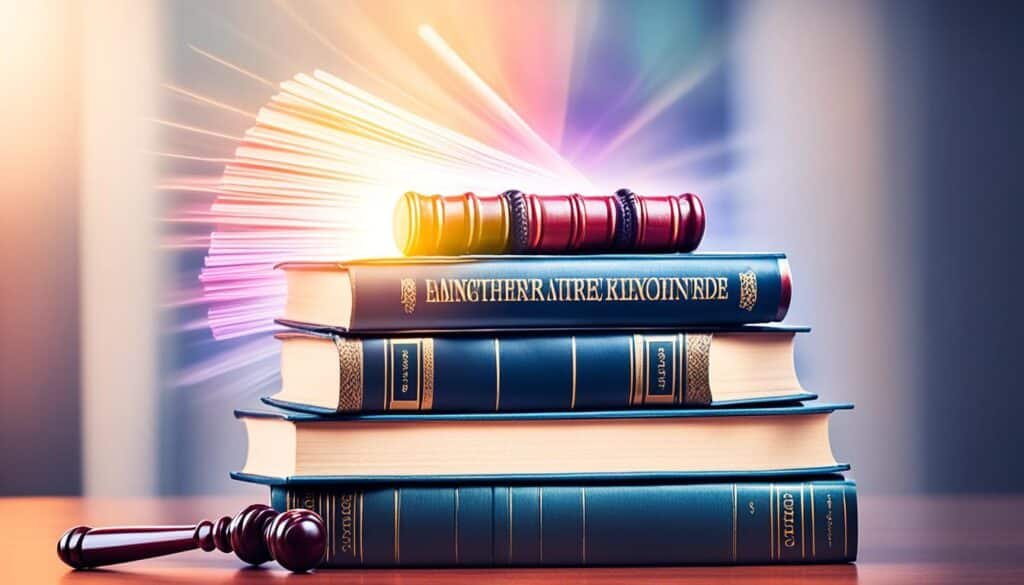
The idea of stare decisis, or sticking to what’s been decided before, is key to our modern legal world. It’s important because it helps keep the legal system stable and fair. This makes sure everyone is treated the same way under the law.
Maintaining Legal Stability
Stare decisis is great at making sure the law is stable. When courts have to follow past decisions, it keeps how the law is used the same. This means people and companies can plan ahead knowing the law won’t suddenly change for them.
Allowing Reasonable Expectations
With the firm use of stare decisis, people can trust that their expectations about the law will be met. This trust in the law is key for a peaceful and successful society. It encourages business, investment, and growth.
Ensuring Equality in Judicial Application
Following precedent helps ensure everyone is treated the same by the law. It stops judges from making unfair choices. This stands for the idea that everyone should be treated equally and that the law should be dependable and fair.
To sum up, sticking to past decisions is crucial for our legal system’s core values. These values include keeping the law stable, meeting people’s reasonable needs, and making sure the law is fair for all. The principle of stare decisis is vital for these goals and for making sure our legal system is solid and trustworthy.
Authoritative and Persuasive Precedents

Precedents in legal practice are very important. They fall into two main types: authoritative and persuasive. This shows how much courts see past decisions as important in making new choices. It is different in common law and civil law countries.
In common law countries, courts must follow authoritative precedents. They are like a rulebook, making sure decisions by judges are the same. This helps keep decisions fair and expected.
However, persuasive precedents aren’t rules that must be followed directly. They can still be very powerful in making a case or decision. They often come from similar or respected cases or legal experts.
Judicial reasoning is key in deciding if a precedent is authoritative or persuasive. Courts think carefully about the law to make authoritative precedents. Persuasive precedents are then like extra help to strengthen the court’s opinion.
This difference in precedents shows how complex and flexible the law can be. It makes sure the legal system keeps up as the world changes, both in civil law and common law areas.
The Role of Precedent in Common Law

In the United States, the common law system relies on stare decisis. This Latin term means to stand by things decided. It’s about following past court decisions to keep the law steady.
Previous court decisions are like guideposts. Later courts should usually stick to them, unless they’ve got a really good reason not to. This gives the law stability by using past cases as a foundation.
Stare Decisis in Common Law Systems
Stare decisis is a vital part of common law. It makes sure courts follow earlier decisions. This keeps the law’s application fair and steady over time.
Even though new laws can change old court rulings, sticking to past decisions is key. It makes the legal system more predictable and just. So, courts mainly use judicial precedent to guide their decisions.
“The doctrine of stare decisis is a fundamental tenet of the common law system, providing a framework for consistent and predictable judicial decision-making.”
Legal Practice and Precedent in Civil Law
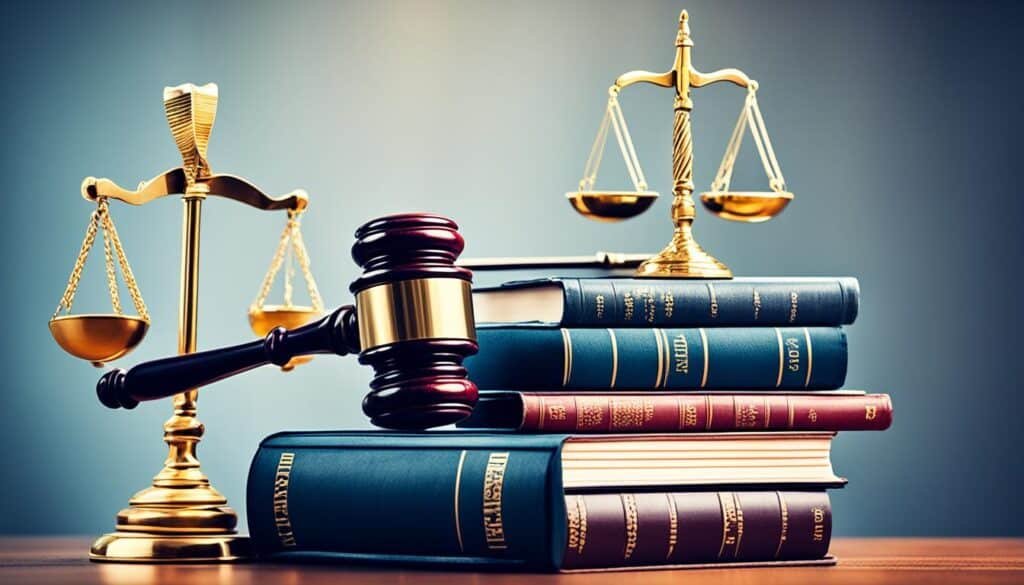
Common law systems use past court decisions to make new ones. Yet, in civil law, how past rulings are used is different. Rulings in civil law aren’t always firm laws for later cases.
Civil law courts mainly focus on written laws and constitutions when making decisions. Judges in civil law might look at old rulings, but these don’t always set hard rules for new cases like in common law.
The big difference here is how civil and common law view the past. Common law believes strongly in keeping up with old decisions (stare decisis). But civil law cares more about codified law, such as constitutions and statutes, for making decisions.
“The key distinction between the common law and civil law traditions underscores the different approaches to the role of judicial precedent.”
So, the legal status of old court cases shows a clear difference between civil and common law. Civil law seeks its rules mainly from written laws, not from past cases. This shows how civil law relies on statutory law and legal principles rather than past decisions and stare decisis.
Learning how civil law uses past cases helps both lawyers and scholars understand these legal systems better. It shows why constitutional law, statutory law, and judicial decisions are handled differently around the world.
Balancing Precedent and Justice
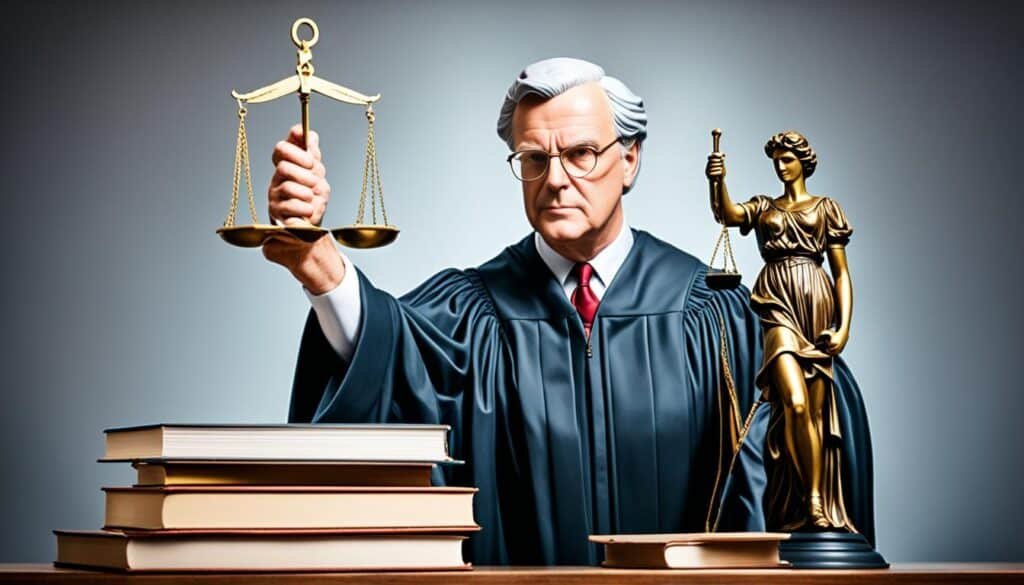
In law, sticking to past decisions helps keep things stable and fair in court. But sometimes, doing what’s always been done might not seem right this time. When justice is at stake, judges need to think hard about tradition versus doing what’s right.
Thankfully, there is some room to move. Courts don’t have to blindly follow their old rulings. They can change them if they see a good reason, like glaring mistakes or outdated views. This ability to change is important. It lets the law stay up to date with what society needs.
Departing from Precedent
Though following past decisions is usually a good idea, it’s not a must. Courts can decide to not follow the old rulings in certain cases:
- If the old decision was clearly wrong or didn’t fit with the law’s main ideas.
- If things have changed a lot since that last decision.
- If doing what’s always been done would be unfair or wrong.
When making this call, the courts must think it through. They weigh keeping tradition against making things right this time. This balance helps keep law fair and trusted.
The use of past decisions in today’s legal world is a mix of many things. It’s about keeping things steady and being fair. But, it’s also about adapting to what’s going on now, and ensuring that the law brings justice. By finding the right balance, the law can work well even in our fast-changing world.
Also Read: The Foundation Of Democracy: Understanding The Constitution
Conclusion
The role of precedent is very important in today’s legal world. Different legal systems see its value differently. In places that use common law, stare decisis (let the decision stand) is key. It means decisions by higher courts are followed by lower ones. This helps make the law grow in a structured way.
In contrast, in civil law areas, decisions by judges don’t hold as much weight. Here, courts look more at written laws and the constitution. These big rules guide their decisions more than past cases.
Even with these differences, following precedent is vital. It keeps things fair and stable in the legal world. Yet, there’s also a need to make sure justice is done. This shows the tricky balance courts must strike.
This balance is a tough challenge for lawyers and thinkers. As our laws keep changing, the role of precedent will keep sparking debates. It’s a key topic in the talk about running a just, law-abiding society.
FAQs
What is the role of precedent in modern legal practice?
Precedent is key in modern law, making sure rules are used the same way. It helps keep cases similar. This idea, called stare decisis, says courts should follow past decisions in new cases.
What is the definition and origin of stare decisis?
Stare decisis means “to stick to things decided and not shake them up.” It tells courts to use past decisions in similar cases. This idea comes from English law. They once wrote, “What’s decided often should be left alone.”
How does precedent serve as a source of law in different legal systems?
In common law, court decisions are legal and help in new cases. But in civil law, courts stick first to laws, the constitution, and treaties. They don’t mainly use past court decisions.
What is the declaratory theory of precedent, and how has it been criticized?
The declaratory theory says judges just show the law, they don’t make it. It sees law as always true, even without courts. But some say that judges do shape the law with their decisions.
Why is the principle of stare decisis important in modern legal practice?
Following past decisions keeps the law the same and fair for everyone. It also lets people know what to expect from the law. This makes the legal system more reliable.
What is the distinction between authoritative and persuasive precedents?
There are two kinds of legal examples: ones courts have to follow and ones they might consider. The first, authoritative, are laws. The second, persuasive, are just tips.
How does the role of precedent differ between common law and civil law systems?
In the United States and other common law places, past cases are very important. But in civil law, these cases are usually only strong for the people directly involved. They’re not so important for later cases.
How do courts balance the importance of precedent with the pursuit of justice?
Sticking to past decisions helps keep the law fair and known. But sometimes, following old rules might be wrong. In those cases, courts can choose justice over just repeating the past.
Source Links
- https://biotech.law.lsu.edu/map/TheImportanceofPrecedent.html
- https://academic.oup.com/ojls/article/41/4/873/6161245
- https://digitalcommons.law.villanova.edu/cgi/viewcontent.cgi?article=1425&context=vlr
